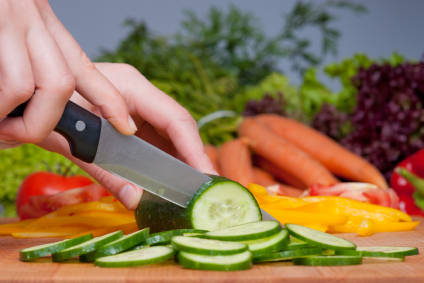Fruits and vegetables: Home for pesticides
mis à jour le 14 July 2015 à 18:33A balanced diet isn't always enough. Fruits, veggies and even utensils may contain well-hidden harmful pesticides and toxins. Here's what to steer clear of when choosing produce for your kitchen.
It is difficult to escape the weed-killers, insecticides and fungicides, because, as a doctor notes, "they are present in approximately half of the fruits and vegetables we regularly consume". Fortunately, most are present in tiny quantities that are below the authorized limit. However, according to a report produced by the European Agency of Food Safety (EAFS) published in May 2014, approximately 2% of vegetables marketed in Europe do not adhere to the legislation.
Worse still, some of them are highly contaminated, "by two, three, eight or even fifteen different phytosanitary products ", observes Dr Franck Gigon. By mixing food during meals, we end up with a cocktail of toxins.
ANTITOXIC STRATEGY
- Organic food is 10 times less exposed to pesticides. This is a particularly sensible choice for fruits and vegetables, which are most subjected to the chemical treatments. According to the Environmental Working Group, who releases the list of the most polluted vegetables each year, the bio is highly recommended for apples, pears, grapes, peppers, celeries, peas, carrots and tomatoes. We should also favour local and seasonal produce, which are less affected than those that are transported over long distances. With salads, avoid lettuce that is more fragile and, thus, more sprayed with pesticides. Instead, choose more robust varieties (romaine lettuce, rocket...). For leeks and cabbages, remove and discard the outside leaves.
- Quickly rinsing off fruits and vegetables doesn't eliminate pesticides from the surface. To get rid of them, it is necessary to peel them or wash them scrupulously: rub them with a vegetable brush, then dry them with kitchen paper or a clean cloth to remove any residue. A dietician warns, "Be particularly attentive to hollow parts, especially around the cores of fruits, because it is where a lot of pesticides accumulate".
A CUP OF PESTICIDES?
A classic cup of tea can contain up to 330 pesticides. By infusing tea in hot water, toxins are released from the leaves (as well as heavy metals). Thus, opt for bio brands. For sodas, choose those packaged in glass bottles, rather than plastic bottles or aluminum cans. Be wary of colas that contain the caramel colorant (E 150), as this includes a carcinogenic component (the 4-MEI).
Read more from our "pesticides" report:
Fish and shellfish: A source of harmful mercury
Meat and dairy products: Beware of dioxins and PCBs
Healthy eating: how to avoid carcinogenic acrylamide grocery products
Kitchenware: Choosing toxins-free varieties
Sylvia Vaisman




